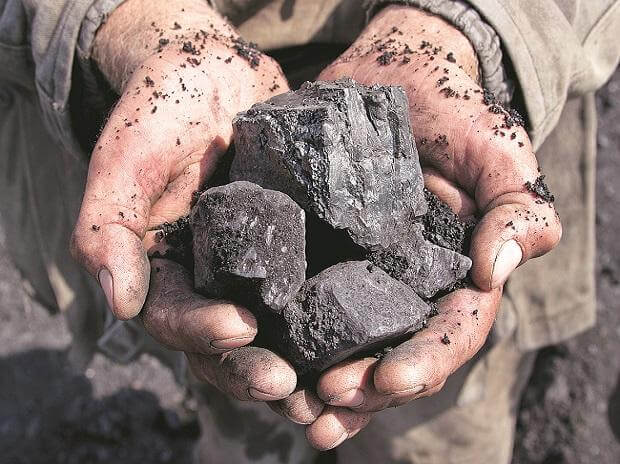Loss of Momentum in the Chinese Economy and how it will impact India

Vaishali Basu Sharma
Consultant ,PPFThis was supposed to be the year that China’s economy bounced back with the removal of the zero-void policy, but what has happened instead is that the economy is struggling. All metrics reveal that China had slipped into deflation for the first time in more than two years.
Rather, it has been revealed that the Chinese economy has major structural problems - demographics, the bursting of the housing bubble, business confidence, unemployment levels as high as 40 percent, export slowdown from the west, companies looking to remove dependence with the “China Plus One” (C+1) strategy increasingly being adopted by multinational companies to diversify their production and supply chain activities by adding an alternative manufacturing or sourcing location. The consequences of supply chain disruption for Chinese GDP could be very grave.
Negative Surprise and ‘Japan Syndrome’? :
Some of these headwinds like the demographics or the business confidence cannot be reserved partly because of the crackdown on private industry. Analysts believe that China’s economic boom has peaked and that it may now be subject to what is termed as the ‘Japanese Syndrome.’ The Japanese economy experienced a stark slowdown in economic growth after the US accused it of being an unfair trader and implemented restrictions on its exports. Chinese export growth in May fell to 8.5 per cent from 14.8 per cent in April.
The debt bubble which by some estimates is 220-250% of the GDP is yet another problem which is becoming harder to solve. So, despite all the progress made in the past three decades there are questions about whether China can continue its economic miracle, or atleast at the same pace. Can China grow at the 5 percent pace it set for itself this year? The IMF’s forecast that China would account for 35 percent of global growth this year, but seems extremely unlikely.
The negative statistics are so disappointing that earlier this week the Chinese government halted the release of youth unemployment figures, as a key indication of the country's slowdown. The halt in release of figures comes at a time when the youth unemployment is already at a record high and 11.58 million university graduates are set to seek jobs this year.
Domestically, the Chinese government’s efforts to deflate the real estate bubble saw a dramatic drop in home prices in 2023. When new rules to control the amount major developers could borrow were introduced in 2020, the real estate industry was badly affected. One of China's biggest property developers, Country Garden, is staring at a loss of up to $7.6bn (£6bn).
There is way too much debt on the local level already and so the government is looking for new ways to get the economy going. Hopes for government stimulus are bleak. With borrowers not repaying loans or settling outstanding invoices, local governments are falling short of funds for development projects.
Certain metrics simply are too glaring to be ignored. For instance foreign investment in China is down at a twenty-five year low. Net exports from China are down about 14.5%. Net imports into China are down about 12% - broadly reflecting a scenario wherein China is unable to trade with the world. China does not have enough orders to send out of its shores and at the same time does not have enough demand from within its own consumers to be in a position to even import much.
FDI slumped to a mere $4.9 billion in April-June 2023, an 87?ll from last year. Producer Price Index declined for eight straight months since October 2022. For China which is a manufacturing driven economy, inflation being down to zero is not a good indication and is in fact a textbook case for economic depression.
Impact of Geopolitical Developments:
As the supplier to the world, Chinese adamant adherence to its zero-covid policy and disruption in supply chains massively impacted the world. The result was a widening of the supply chains to other parts of the world to a point that internationally dependence on China got reduced.
China’s stagnant consumer prices and wages in contrast to inflation are being recorded around the world. The period of negative growth is further marked by the fact that foreign investment levels are at their lowest point in the last 25 years. Additionally, foreign trade and exports have also seen a decline.Foreign investors have been leaving and there is negative sentiment towards the Chinese equity market.
On top of the internal structural issues China also struggles as the US has imposed new restrictions on trade and investment whether its export control on shipments of technology to China, or limits outbound investment.
United States President Joe Biden has signed an executive order on ‘Addressing United States Investments in certain National Security Technologies and Products in Countries of Concern’ which in effect halts new investment in China particularly in sensitive technologies such as semiconductors and microelectronics, quantum computing and artificial intelligence, a move that is expected to take effect next year, and is “gravely concerning” for China. For now China, Hong Kong and Macau are listed as the “countries of concern”
What to do with an economy that is simply too large to ignore?
At a recent fundraising event in Utah, President Biden likened China’s economic challenges combined with weak growth to a ‘ticking time bomb.’ Furthermore he has called the Belt and Road Initiative the “debt and noose” program. There are indications of course that the Joe administration is seeking a more rational relationship with China. Anthony Blinken’s visit to Beijing was an attempt to seek settlement of the economic war between the two countries that has been destabilising the global economy since 2018-19, exacerbated thereafter by the pandemic and disruption of supply chains.
China’s National Bureau of Statistics of China (NBS) reports China’s Consumer Price Index (CPI), the main measure of inflation, fell 0.3% in July - the country’s first negative inflation reading since 2021, during the second year of the Covid 19 pandemic. Analysts on the other hand forecast a 0.4% year on year drop in China’s CPI. The report raises worries of European Union business entities who have China as a key partner because it points to China’s weakening economy.
Is it too early to write-off the Chinese economy?
In a rather bold move the People's Bank of China has unexpectedly cut a key interest rate by the most since 2020. The central bank lowered the rate on its one-year loans — or medium-term lending facility — by 15 basis points to 2.5%. Not hiking interest rates to tame inflation indeed requires gumption. This move came shortly before the release of July economic activity data including retail sales that showed a faltering recovery. This has been done to make manufacturing cheap and continue providing incentives. The Chinese leadership has decided to make sure that the funding remains available, so companies can continue to buy equipment and store it in factories. So clearly an indication that China is not going to easily compromise on its economic growth. Another sector that has shown positive double digit growth is in manufacturing of solar cells which grew 54% in the first half, according to the NBS, while EVs were up 35%.
A result of the downturn in the Chinese economy is that countries like India, along with Mexico, Taiwan, and Vietnam are being favoured. India’s large pool of skilled workforce in information technology (IT), engineering, pharmaceuticals, and services, has elicited interest from multinational corporations (MNCs) and businesses looking to diversify from China. But while the structural problems are unique to China, India has its own short term challenges. Inadequate infrastructure continues to be a deficiency especially affecting transportation and logistics. The PLI scheme might turn into a protectionist licence Raj if not contained. The recent banning of certain imports like PCs/laptops is a negative approach. The need of the hour is to create a positive framework for companies to come to India and invest because the market makes sense. Global investors or domestic investors are likely to see the recent ban as a regressive economic action. A cumbersome taxation system, with state and central taxes, can be challenging for businesses to navigate. India needs to figure out a way to make its own market competitive in absolute terms not in comparative terms with China.






